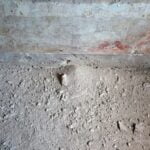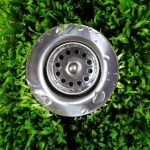Have you ever wondered, “how can I improve FM radio reception in my home?” Good FM radio reception is crucial for enjoying your favorite music, news, and talk shows without any interruptions.
Whether you’re experiencing static, poor sound quality, or frequent dropouts, there are various ways to enhance FM radio reception in your home. In this article, we will explore the importance of good FM radio reception and provide practical tips for improving it to ensure a seamless listening experience.
Having good FM radio reception in your home is essential for staying connected to the latest news updates, discovering new music, and enjoying your favorite radio programs. Poor reception can lead to frustration and diminished enjoyment of your listening experience. By understanding the factors that contribute to FM radio reception issues and knowing how to address them, you can ensure a consistent and high-quality listening experience in your home.
In the following sections, we will discuss how to assess the current FM radio reception in your home by identifying problem areas. We’ll also explore the process of upgrading your FM antenna and finding the best location for optimal reception. Additionally, we’ll provide tips for eliminating interference from obstacles and electronic devices that disrupt FM radio signals. Stay tuned as we delve into the various solutions for improving FM radio reception in your home.
Assessing the Current FM Radio Reception in Your Home
When it comes to improving FM radio reception in your home, the first step is to assess the current reception quality and identify any problem areas. This can be done by tuning in to various FM radio stations and noting any instances of poor or distorted signals. Additionally, you can take note of specific locations within your home where reception seems to be particularly weak.
One effective way to understand the problem areas is by physically moving around your home while listening to the radio. This will help you pinpoint specific spots where reception may be obstructed by obstacles or interference. Keep track of these areas as it will help when implementing strategies to enhance FM radio reception.
It’s also important to consider any factors that could be contributing to poor FM radio reception, such as the layout and construction of your home, as well as any electronic devices that may be causing interference. By thoroughly assessing the current state of FM radio reception in your home, you’ll be better equipped to make informed decisions about how to improve it.
| FM Radio Reception Assessment | Problem Areas Identified |
|---|---|
| Tune in to various FM stations | Note instances of poor or distorted signals |
| Physically move around home while listening to radio | Pinpoint specific spots with weak reception |
| Consider factors contributing to poor reception | Layout, construction, and electronic interference |
Upgrading Your FM Antenna
When it comes to improving FM radio reception in your home, one of the most effective solutions is upgrading your FM antenna. A better quality antenna can make a significant difference in the clarity and strength of the radio signals you receive. But with so many options available, it’s important to choose the right type of antenna for your specific needs.
Before selecting a new FM antenna, it’s essential to consider factors such as the distance from the nearest radio station, the geographical landscape around your home, and any potential obstacles that could disrupt radio signals. For example, if you live in a rural area with limited radio tower coverage, a more powerful outdoor antenna may be necessary.
On the other hand, if you reside in an urban setting with numerous tall buildings nearby, a multi-directional indoor antenna may be more suitable.
Additionally, it’s crucial to research different types of antennas such as dipole antennas, loop antennas, and Yagi antennas to determine which one would work best in your location. Dipole antennas are commonly used for FM reception and are relatively easy to install both indoors and outdoors. Loop antennas are known for their compact size and ability to pick up weak signals. Yagi antennas offer high gain and directivity but require precise aiming towards the radio station’s transmitter.
Overall, by carefully evaluating your specific circumstances and understanding the strengths of different antenna types, you can make an informed decision on upgrading your FM antenna to improve reception in your home.
| FM Antenna Type | Best Use |
|---|---|
| Dipole Antennas | Indoor or outdoor use; general reception with moderate range |
| Loop Antennas | Compact size; suitable for picking up weak signals |
| Yagi Antennas | High gain and directivity; requires precise aiming towards transmitter |
Finding the Best Location for Your FM Antenna
When it comes to improving FM radio reception in your home, finding the best location for your FM antenna is crucial. The placement of your antenna can greatly affect the quality of the signal you receive, so it’s important to take the time to find the optimal location.
Understanding Signal Strength
Before determining the best location for your FM antenna, it’s important to understand how signal strength works. Radio signals can be affected by obstacles such as buildings, trees, and even other electronic devices in your home. Identifying these potential obstacles can help you determine where to place your antenna for the best reception.
Experiment With Different Positions
Once you have a better understanding of potential signal interferences, experiment with different positions for your FM antenna. Try placing it near a window or higher up in your home to see if that improves reception. You may also want to try placing it in different rooms to see if there is a location that consistently provides better signal strength.
Consider External Antennas
If you’re still struggling to find a good location for your FM antenna inside your home, consider using an external antenna. External antennas are often more effective at receiving radio signals since they can be installed outside where there are fewer obstacles blocking the signal. Just make sure to choose an outdoor-rated antenna and secure any necessary permits before installation.
By taking these tips into account and carefully considering the placement of your FM antenna, you can significantly improve FM radio reception in your home. Experiment with different locations, consider external antennas, and pay attention to potential obstacles that could be affecting signal strength. With some patience and trial-and-error, you can find the best location for optimal reception of FM radio signals in your home.
Eliminating Interference
One of the key factors that can affect FM radio reception in your home is interference from obstacles and electronic devices. Interference can cause static, weak signals, or even complete loss of reception. It’s important to identify and eliminate these sources of interference in order to improve the overall FM radio reception.
To start, take a look at the layout of your home and identify any potential obstacles that may be blocking or reflecting FM radio signals. Large metal objects, dense walls, and structures like buildings or trees can all obstruct the signal. Try repositioning your FM antenna to see if it improves reception by minimizing these obstructions.
In addition to physical obstacles, electronic devices within your home can also cause interference with FM radio signals. Devices such as televisions, computer monitors, and wireless routers emit electromagnetic waves that can disrupt the reception. Try moving your FM antenna away from these devices or turning them off temporarily to see if it improves the reception. Additionally, consider using shielded cables for your electronic devices to reduce electromagnetic interference that could disrupt FM radio signals.
These simple steps can help you identify and eliminate sources of interference that may be disrupting your FM radio reception in your home. By minimizing obstacles and reducing electronic device interference, you can greatly improve the overall quality of your FM radio signal.
Using Signal Boosters and Amplifiers
If you’re struggling with poor FM radio reception in your home, using signal boosters and amplifiers can be an effective solution for enhancing weak signal areas. These devices work by improving the strength and quality of the FM radio signals, resulting in a better listening experience for you and your family.
When considering signal boosters and amplifiers, it’s important to choose the right type that is compatible with your FM radio system. There are various options available, including in-line amplifiers, distribution amplifiers, and antenna-mounted amplifiers. Before making a purchase, assess your FM radio system and determine which type of amplifier will best suit your needs.
Once you’ve selected the appropriate amplifier, the next step is to install it in the optimal location within your home. Placing the amplifier near the FM radio or antenna can maximize its effectiveness. Additionally, ensure that the amplifier is properly connected to the FM radio system according to the manufacturer’s instructions.
In addition to using signal boosters and amplifiers, conducting regular maintenance on your FM antenna can also contribute to improved reception. Check for any loose connections or damaged components, as these issues can impact signal strength. By incorporating these strategies into your efforts to enhance FM radio reception in weak signal areas, you can enjoy clear and uninterrupted audio quality throughout your home.
Maintenance and Troubleshooting
Regular Cleaning and Inspection
To ensure optimal FM radio reception in your home, it is important to regularly clean and inspect your FM antenna. Dust, debris, and weather-related damage can all affect the performance of your antenna. Use a soft cloth to gently clean the antenna and check for any signs of wear or damage. If you notice any issues, such as loose connections or corrosion, it is important to address them promptly to avoid further deterioration of reception.
Weatherproofing Your Antenna
Another key maintenance tip for improving FM radio reception is to weatherproof your antenna. Exposure to harsh weather conditions can cause damage to the antenna, leading to decreased signal strength. Consider investing in a weatherproof cover or coating for your antenna to protect it from rain, snow, and extreme temperatures. This simple step can help prolong the life of your antenna and maintain consistent FM radio reception.
Troubleshooting Common Reception Issues:
Check Signal Interference
One common issue that can impact FM radio reception in your home is signal interference. Electronic devices, power lines, and other obstacles can disrupt radio signals, resulting in poor reception quality. To improve FM radio reception, identify potential sources of interference in your home and reposition your antenna away from these obstacles. Additionally, consider using shielded cables and filters to minimize interference from electronic devices.
Assess Cable Connections
Improper cable connections can also contribute to poor FM radio reception. Ensure that all cable connections are secure and properly insulated to prevent signal loss. If you suspect a faulty connection, consider replacing the cables or seeking professional assistance. Checking and troubleshooting cable connections can help address common reception issues and improve overall signal strength.
By following these maintenance tips and addressing common reception issues through troubleshooting, you can enhance FM radio reception in your home and enjoy clear, uninterrupted broadcasts of your favorite stations.
Alternative Solutions
If you have tried upgrading your FM antenna, finding the best location, and eliminating interference but are still experiencing poor FM radio reception in your home, there are alternative solutions to consider. These additional options can help improve your FM radio reception and ensure that you can enjoy clear, high-quality sound from your favorite stations.
Here are some alternative solutions for improving FM radio reception in your home:
1. Install an FM signal amplifier: Adding a signal amplifier to your FM antenna setup can boost weak signals and improve overall reception. Signal amplifiers are particularly useful for homes located in areas with poor signal strength or surrounded by obstacles that disrupt radio waves.
2. Use a multi-directional FM antenna: If your current FM antenna is designed to only receive signals from one direction, consider switching to a multi-directional antenna. This type of antenna can capture signals from multiple directions, increasing the likelihood of receiving clear transmissions from distant stations.
3. Consider a radio frequency (RF) distribution system: For larger homes with multiple audio systems or rooms where you want to listen to the radio, an RF distribution system can distribute FM signals throughout your home. This allows you to enjoy reliable reception in every room without the need for separate antennas.
By implementing these alternative solutions, you can significantly improve FM radio reception in your home and enhance your listening experience. Whether it’s adding a signal amplifier, switching to a multi-directional antenna, or investing in an RF distribution system, exploring additional options is key to achieving optimal FM radio reception throughout your living space.
Conclusion
In conclusion, achieving good FM radio reception in your home is essential for enjoying clear and uninterrupted music, news, and entertainment. By following the tips and strategies outlined in this article, you can significantly improve the quality of your FM radio reception and enhance your overall listening experience.
First and foremost, it is crucial to assess the current FM radio reception in your home by identifying problem areas such as interference from electronic devices and obstacles that disrupt the signal. By eliminating these obstacles and reducing interference, you can greatly enhance the clarity of your FM radio reception.
Additionally, upgrading your FM antenna to the right type for your home and finding the best location for optimal reception are key steps in improving FM radio reception. Consider using signal boosters and amplifiers to enhance FM radio reception in weak signal areas, and make sure to regularly maintain your FM antenna to troubleshoot common reception issues.
By implementing these strategies and exploring alternative solutions such as online streaming or digital radio, you can effectively improve FM radio reception in your home. These final tips will help you enjoy clear and high-quality FM radio signals throughout your house. Now you have a clearer understanding of how you can improve FM radio reception in your home.
Frequently Asked Questions
How Do I Get the Best FM Signal?
Getting the best FM signal involves several steps. Start by ensuring your radio antenna is fully extended and positioned upright. Try moving your radio to different locations within your home to find the best reception. If possible, invest in a high-quality external antenna for improved signal strength.
What Causes Poor FM Reception?
Poor FM reception can be caused by various factors such as physical obstacles like buildings or mountains obstructing the signal path, electromagnetic interference from nearby electronic devices, weak transmitter signals, or a faulty radio antenna. Identifying and addressing these issues can help improve reception.
How Can I Improve My FM Range?
Improving your FM range can be achieved by using a higher quality antenna designed for FM radios which can boost the signal strength and range. Positioning the antenna at a higher elevation or closer to an unobstructed outdoor area can also improve the range of your FM reception.
Additionally, investing in a good quality radio with a sensitive tuner can help pick up weaker signals and extend the range.

I’m thrilled to have you here as a part of the Remodeling Top community. This is where my journey as an architect and remodeling enthusiast intersects with your passion for transforming houses into dream homes.





